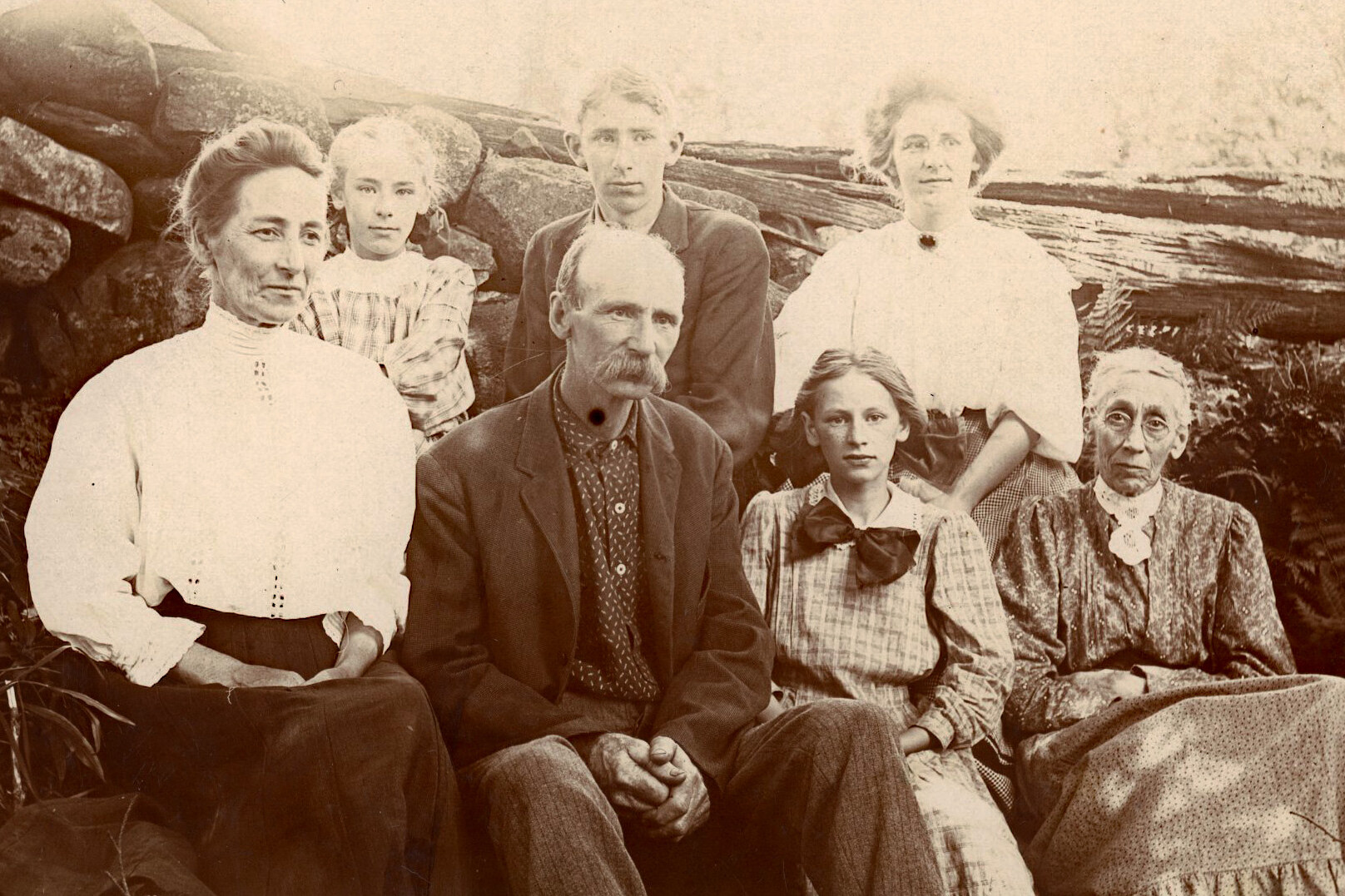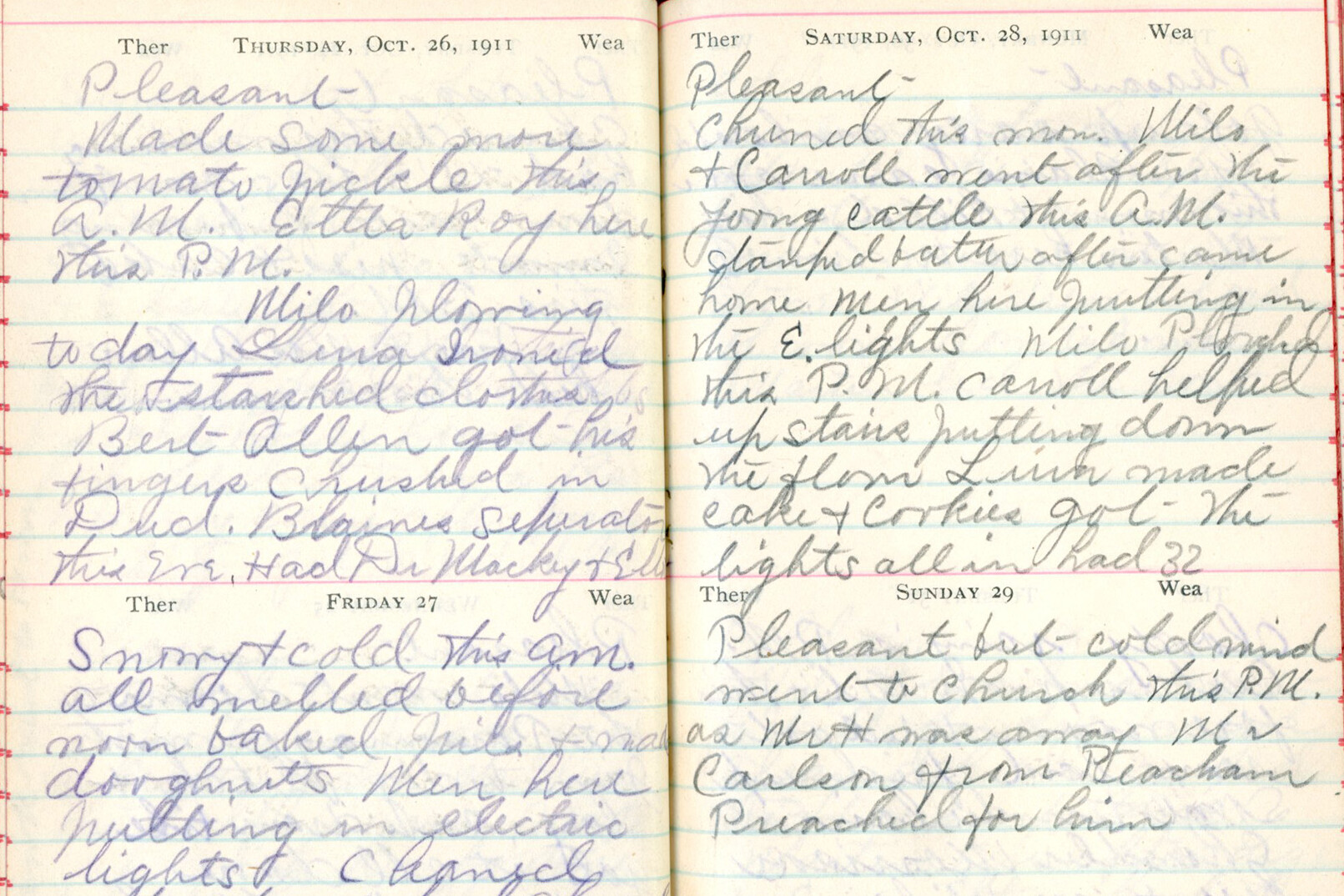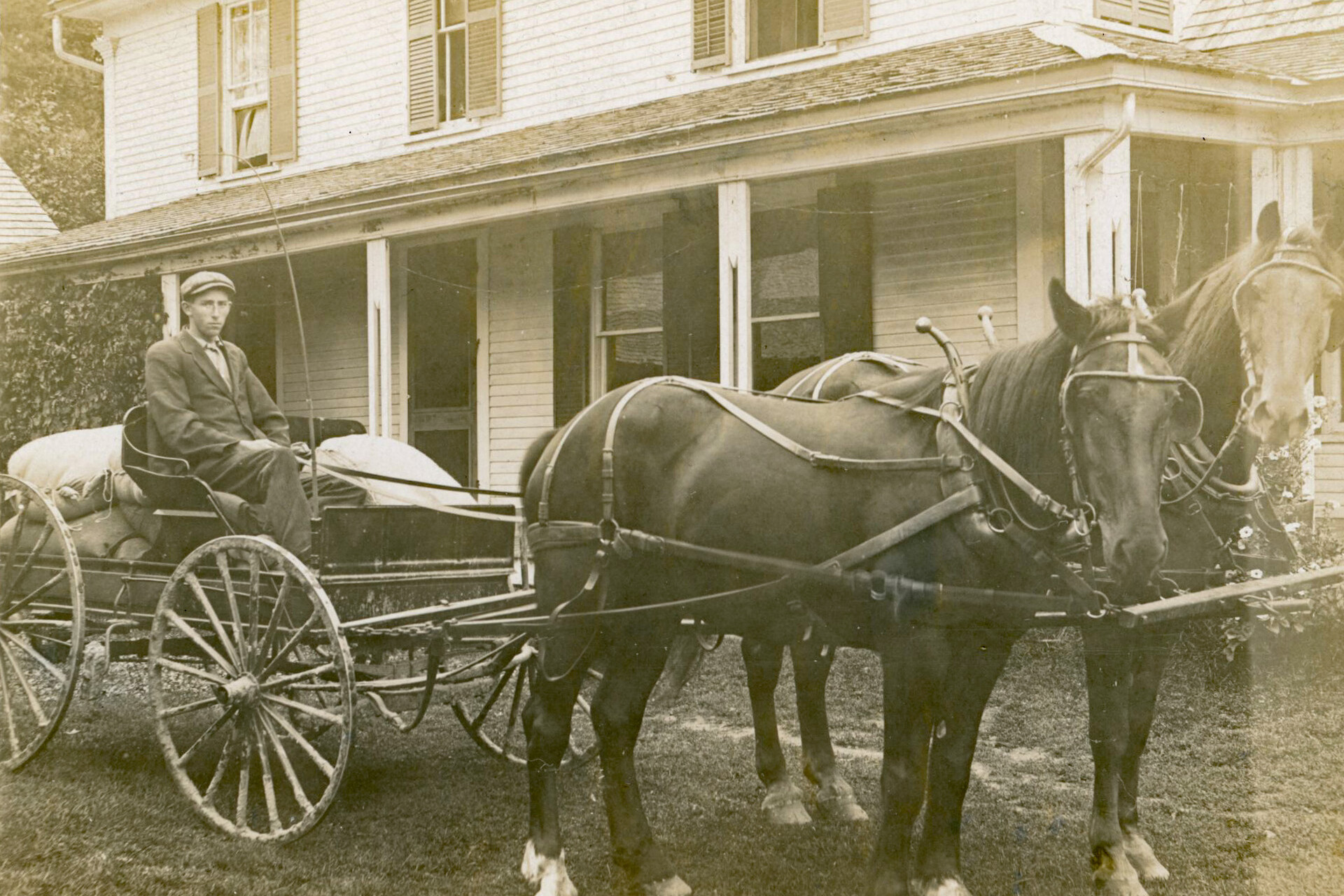The McLaren Farm
Who worked on a dairy farm in 1911?
Luvia Somers McLaren lived on a dairy(related to milk and milk products) farm in Barnet, Vermont. She started keeping a diary(a daily recording of a person’s activities or thoughts) in 1911 when she was 49 years old. Her husband, Milo, wrote in the diary at the beginning of the year. She started writing about her days in June. Luvia wrote about her daily life in a diary almost every year through 1957.
The 1910 census(a count of all the people living in a place with details about each person) records say that Milo McLaren was a farmer. The census reported that Luvia had no occupation(work or a job). She did not have a job off the farm, but she was very busy working on the farm. On Tuesday, August 1, 1911, she wrote:
“Pleasant this A.M. had a little thundershower this P.M. enough to stop the men from getting in barley churned this morn 50 ½ [pounds of butter] baked bread Ironed Canned 2 qts beans I worked on Elsies dress this P.M. Harry came and got 9 ½ doz eggs [and paid] .22 cts”
On just this one day, Luvia churned butter, baked bread, and saved vegetables from the garden. She also ironed and sewed clothes. Maybe she took care of the chickens that laid the eggs. Her work on the farm was just as important as the men who were harvesting barley(a type of grain used for food).
Luvia often wrote about the work that Milo, Carroll, and Martin did on the farm. Milo was her husband, Carroll was her only son, and Martin was a hired laborer. She also wrote about the work her daughters Lura and Elsie did on the farm. Lura helped to sew clothes and cook food for the family. She also sometimes worked for another family in the town.
In 1911, Luvia wrote about some changes on the farm. They hired Herbert Brock and paid him $6.00 to build a silo. With a silo(a tall round building for storing animal food), they could store corn silage(animal food made from shredded corn stalks and other plants) to feed their cows in the winter. Good food helped the cows produce more milk. In October, the family got electric lights on the farm. Later on, they could use the electricity to run machines in the house and on the farm. Luvia and Milo continued to run the dairy farm for many years.
Thinking About History
Historians ask questions to think deeply about history.
In 1910, the census listed Luvia McLaren as not working, even though she did a lot of work on the farm. In 1880, the census listed Luvia's mother's work as "keeping house." Why do you think the census records stopped counting the work that women did at home?
Learn More
Follow the links below to explore related topics.
Read the handwritten entries from a scan of Milo and Luvia Somers McLaren's 1911 diary. Milo wrote most of the entries from January through May. Luvia wrote the entries from June through December.
Read a transcription (typed version) of entries from Milo and Luvia Somers McLaren's 1911 diary. The transcription keeps the spelling and punctuation from the original handwritten entries.
Try writing your own diary entries. Ther. means temperature (or thermometer) and wea. means weather.
Listen to the program Turning on the Lights: Electricity Comes to Rural Vermont, 1943 from Green Mountain Chronicles
Read the article Farmer’s Gold from Green Mountaineer Magazine
Read the article Connecting: The Telephone in the Mad River Valley from Historic Roots Magazine
Copy and paste this citation to show where you did your research.
Vermont Historical Society. "The McLaren Farm." Vermont History Explorer. Accessed December 12, 2025. https://sitemap.vermonthistoryexplorer.org/luvia-mclaren


